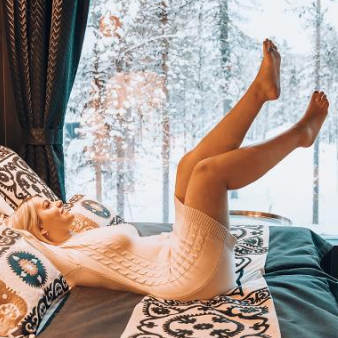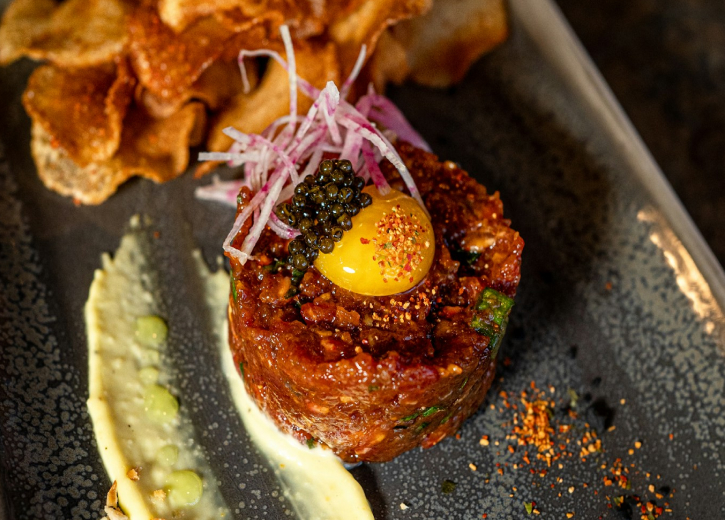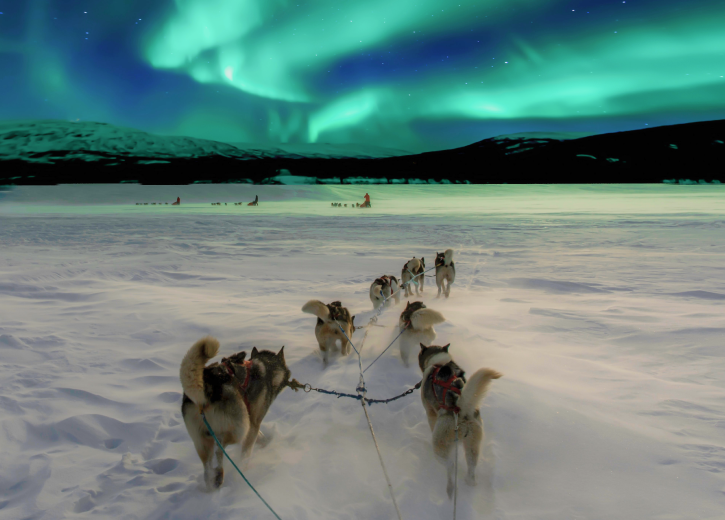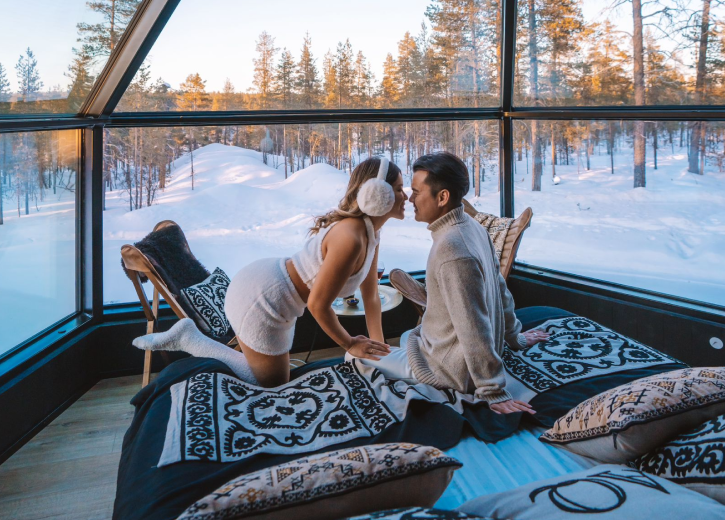What makes Lapland a unique Arctic destination?
Lapland, the northernmost region of Finland, offers an unparalleled experience of the Arctic night, making it a unique destination for travelers seeking the wonders of the far north. Nestled within the Arctic Circle, Lapland is renowned for its pristine landscapes, where snow-capped forests and frozen lakes create a winter wonderland. The region’s indigenous Sami culture adds a rich tapestry of traditions and history, offering visitors a glimpse into a way of life that has been sustained for centuries.
The geographical location of Lapland ensures prolonged periods of darkness during winter, known as the Arctic night. This phenomenon provides the perfect backdrop for witnessing the mesmerizing northern lights, or Aurora Borealis, which dance across the sky in vibrant colors. The absence of light pollution in this remote area enhances the visibility of these celestial displays, making Lapland an ideal spot for aurora hunters.
Moreover, the cultural heritage of the Sami people, the indigenous inhabitants of Lapland, enriches the Arctic experience. Visitors have the opportunity to learn about traditional Sami crafts, music, and cuisine. Engaging with the Sami culture allows for a deeper understanding of the harmony between humans and nature in these extreme conditions, offering a profound appreciation of the Arctic environment.
What are the top activities to enjoy during the Arctic night?
Lapland offers a myriad of activities that embrace the magic of the Arctic night, ensuring an unforgettable adventure for all ages. One of the most popular pursuits is northern lights viewing, where travelers can witness the ethereal beauty of the Aurora Borealis. Staying in glass-ceiling igloos, like those at Aurora Queen Resort, provides a cozy and immersive experience, allowing guests to enjoy the spectacle from the warmth of their beds.
For those seeking a bit of adventure, dog sledding offers a thrilling way to explore the snowy landscapes. Led by a team of eager huskies, guests can glide through the tranquil forests and open plains, experiencing the silent beauty of the Arctic. Reindeer safaris offer another authentic experience, allowing visitors to connect with the traditional Sami way of life while enjoying a serene ride through the snow.
Snowmobile tours add an exhilarating element to the Arctic night, with guided adventures through scenic trails and remote areas. These tours provide an opportunity to explore the rugged terrain and perhaps catch a glimpse of the northern lights. With options for both shared and individual snowmobiles, participants of varying experience levels can partake in this exciting activity.
How can you best view the northern lights in Lapland?
To maximize the chances of witnessing the northern lights in Lapland, it is essential to consider timing, location, and conditions. The optimal period for viewing the Aurora Borealis is between late September and early April, when the nights are longest and the skies are darkest. During this time, the auroras are most active, providing ample opportunities for sightings.
Lapland’s remote and sparsely populated areas offer some of the best locations for aurora viewing, as they have minimal light pollution. Staying at resorts like Aurora Queen, with its glass-ceiling igloos, ensures that guests have a front-row seat to this natural spectacle. These accommodations are strategically situated to provide unobstructed views of the northern sky.
Clear, cloudless nights are ideal for aurora viewing. Checking local weather forecasts and aurora activity predictions can help plan the best times to venture out. Being patient and prepared to wait outdoors, away from artificial lights, increases the likelihood of witnessing this awe-inspiring phenomenon in all its glory.
What should you pack for an Arctic night adventure?
Preparing for an Arctic night adventure requires careful consideration of clothing and gear to ensure comfort and safety in extreme conditions. Layering is crucial, as it allows for easy adjustments to changing temperatures. Start with moisture-wicking base layers, followed by insulating layers such as fleece or wool, and finish with a windproof and waterproof outer layer.
Essential accessories include thermal gloves, hats, and scarves to protect extremities from the cold. Boots should be insulated and waterproof, with thick socks to keep feet warm. Many resorts, including ours, provide additional thermal clothing for outdoor activities, ensuring guests are well-equipped for the Arctic environment.
Don’t forget essentials like sunglasses to protect against the glare of the snow during daylight hours, and sunscreen for any exposed skin. A small backpack can be useful for carrying extra layers, snacks, and a camera to capture the breathtaking landscapes and northern lights.
How does the Arctic night impact local wildlife and environment?
The Arctic night significantly influences the wildlife and ecosystems of Lapland, prompting unique adaptations among local species. Animals such as foxes and reindeer have developed remarkable survival strategies to endure the prolonged darkness and frigid temperatures. These adaptations include thick fur, specialized diets, and migratory behaviors to find food.
In the absence of sunlight, many species rely on heightened senses of smell and hearing to navigate and hunt. The fox, for instance, uses its acute hearing to detect prey beneath the snow, while reindeer have evolved to see ultraviolet light, allowing them to identify food sources and predators in the dim Arctic light.
The Arctic night also plays a critical role in the environmental balance of Lapland. The extended period of darkness influences plant cycles and the overall energy flow within ecosystems. Understanding these dynamics highlights the resilience and interconnectedness of life in the Arctic, emphasizing the importance of preserving this pristine environment for future generations.



